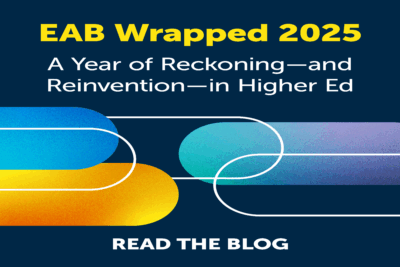3 ways to align tenure criteria with your institutional strategy
The “what you measure matters” mentality sparks some ambivalence in academia to put it lightly. But in our current era of skepticism toward higher ed’s return on investment, being accountable often means being quantified—whether we like it or not.
When it comes to tenure criteria however, the activities that get counted are often based on narrow or outmoded forms of academic work that don’t advance the institution’s strategic priorities. These three types of changes to promotion and tenure criteria can help academic leaders measure what matters: academic work that bolsters institutional strategy.
Align tenure requirements with academic mission
In their recent book, Land-Grant Universities for the Future, Gordon Gee and Stephen Gavazzi argue that departments risk incentivizing faculty to ignore the public service mission of a land-grant institution when they maintain research activity as “the coin of the realm.” Instead, the authors propose tenure criteria that reward faculty engagement with the community.
But it’s not just land-grant universities that can benefit from mission-focused tenure criteria. Such a realignment provides opportunity for departments to draw connections between specific academic work and their institution’s raison d’etre. For example, at Binghamton University (SUNY), the provost’s office measures a broad range of faculty activity that it considers as “contributions to mission”—from creative compositions and performances to contributions to peer review—in order to more accurately measure faculty workload and support tenure review.
Broaden what counts as academic work
Focusing metrics on mission alone can still miss some of the critical contributions that faculty make. Many colleges and universities either rely on measures that narrowly define academic activity only in terms of publications or external grants, or only recognize research that falls within disciplinary boundaries. These narrow definitions can keep faculty focused on how scholarship has always been done in the past rather than thinking about how their work can help their institution evolve for the future.
To get around this problem, Plymouth State University adopted Ernest Boyer’s four definitions of scholarship in its promotion and tenure guidelines, which extends the categories for what “counts” as academic work beyond traditional research and teaching in two ways:
- “Scholarship of Engagement”, or the use of research to collaboratively solve pressing social, civic or ethical challenges in a community. This could include application of research in the community, but also activities like consulting engagements or interviews with the media.
- “Scholarship of Integration”, which connects academic work across disciplinary boundaries and “advances knowledge through synthesis.”
Encourage faculty to “fail forward”
Over the past few years, the tech sector brought the concept of psychological safety out of management textbooks and into the popular consciousness. The idea behind psychological safety is that employees who feel safe at work—who know they can fail at something without adverse impact on their compensation or job safety—will take more risks and stretch in new directions, in small ways and big. Incentive structures that measure productivity only in terms of output, like the total value of grant money awarded, can undermine faculty members’ willingness to take risks.
One solution is to adopt academic metrics that also capture research effort. These metrics can include:
- The number of proposals or papers submitted
- The dollar amount of proposals
- Proportion of funding from different sources
- Benchmarks for the success rates of proposals and papers
Isolating and capturing these research efforts also allows academic leaders to identify areas where faculty might benefit from more support, like grant-writing assistance or professional development.
More Blogs

Is your yield rate okay?

EAB Wrapped 2025: A year of reckoning—and reinvention—in higher ed
